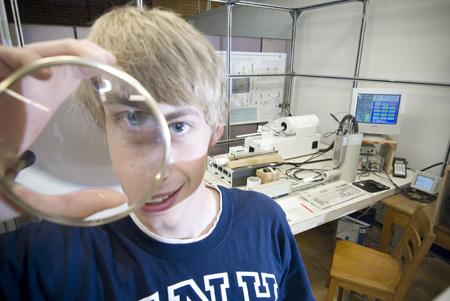Paleomagnetic Analysis of the Denver Basin’s K/T Boundary

Matt Jones is fascinated with looking back in time. And with a research grant from the Hamel Center, he had the opportunity to look way, waaay back—65 million years.
That’s when scientists believe a cataclysmic event took place: That an asteroid 6-miles across slammed into the Earth, creating a crater 110 miles wide and sending so much dusty debris into the air that it changed the climate, wiped out dinosaurs, and paved the way for mammals to thrive.
"It created a boundary in the Earth’s history where dinosaurs go extinct. And that opens up a ecological niche where mammals can radiate and start to evolve," says Jones, a junior studying Earth sciences.
And that’s just for starters.
Knowing exactly where that dusty debris layer lies in the soil gives scientists a great benchmark for dating other soil layers. And that, Jones says, can also give researchers valuable tools for studying longterm changes to the Earth’s climate.
A Summer Undergraduate Research Fellowship (SURF) covered Jones’s expenses as he joined teams of researchers in Montana, Colorado, Wyoming, and North Dakota to collect soil samples. Back in Durham, he measured their magnetic properties to pinpoint their ages.
"It gave me an opportunity to do my own research, get my foot in the door, and build a resume—but more importantly, to figure out if this is something I really want to do with my life," Jones says. Eventually, he hopes to continue his Earth-science studies in graduate school.
"I’ve had a lot of help from all the professors here,” Jones says. “They’ve really prepared me well for my work here, and in the future."
—Jim Graham